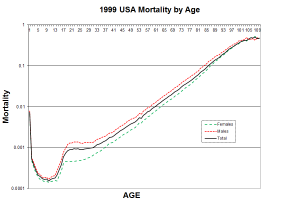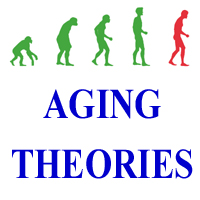 Medicine is largely an exercise in cause and effect. Because senescence has such a diffuse and multi-symptom nature and also is of such a long-term nature, it is probably the most difficult area of medicine in which to establish cause-and-effect relationships. This is one reason that theories of aging that suggest research directions are so critical to the development of treatments for age-related diseases and conditions.
Medicine is largely an exercise in cause and effect. Because senescence has such a diffuse and multi-symptom nature and also is of such a long-term nature, it is probably the most difficult area of medicine in which to establish cause-and-effect relationships. This is one reason that theories of aging that suggest research directions are so critical to the development of treatments for age-related diseases and conditions.
The term anti-aging medicine means different things to different people. Many see “anti-aging medicine” as essentially a cosmetic or esthetics effort. We can delay the appearance of aging with tummy-tucks, face lifts, and Botox.
Another view is towards “healthy aging,” or “better aging.” We can work to extend the healthy and happy portion of our lives and decrease the length of the nursing-home-stage but not necessarily live much longer. Life-style modification including exercise and diet are frequently part of this approach. Lifestyle protocols are not very controversial; most physicians favor less obesity, healthy diet, more exercise, a generally more active life, and avoiding dangerous behaviors like smoking, alcoholism and drug abuse. There is wide respect for a “use it or lose it” concept in which exercise and activity are beneficial. Even exercising a person’s mind is thought to delay age-related mental deficits.
Finally, some are looking toward essentially treating aging, per se, and delaying the age at which manifestations of aging would otherwise appear in a particular individual. Some consider that such manifestations are reversible and that regenerative medicine could reverse or reduce some symptoms of aging including age-related diseases. Average and maximum human lifespan could be extended. Since there is little actual clinical evidence of pharmaceutically extending maximum human lifespan and this idea is unpopular in the general public and the medical community, most practitioners are careful not to make extravagant claims in this area. Treating aging, per se, might be expected to have more obvious effects on older people.
In a twist to this idea, it is widely agreed that senescence is largely an inherited characteristic and varies between individuals. The old saw goes: “If you want to live a long life, choose long-lived parents.” An anti-aging practitioner might say “Your hormone levels are not typical for a person your age and need to be adjusted. Of course, if that is a valid approach, the patient might say: “I would like to have my hormone levels adjusted to those of a typical 110-year-old or whatever levels the 110-year-old had when they were my age!” See more on hormones below.
Anti-Aging Agents
The thousands of prescription drugs are tested and certified for use in treating a particular disease or condition. However, a physician can prescribe most prescription drugs “off book” for other uses. In addition there are thousands of over-the-counter non-prescription drugs thought to be beneficial in treating some disease or condition as well as thousands of foods and substances sold by vitamin and health food stores also thought to have beneficial effects. Hard evidence of effectiveness such as double-blind clinical trials is usually much less available on the non-prescription substances.
Programmed aging theories suggest that aging is substantially the result of a biological mechanism and therefore that agents can be found that affect this mechanism just as they can be found for treating the disease and condition-specific mechanisms. As programmed aging theories become more popular we can expect to see many substances suspected of having anti-aging properties. Because it is progressively harder to establish cause and effect for anti-aging agents in longer-lived organisms such as humans a lot of the evidence will be coming from experiments with shorter-lived organisms such a mice (~2.5 years), some short-lived fish species (8 weeks), even worms and flies that may or may not be directly applicable to humans. Agents can also be evaluated by measuring their effect on senescence indicators such as telomere length, hormone levels, etc.
Non-programmed theories suggest that anti-damage agents such as anti-oxidants or anti-inflammatory agents might be effective.
The US National Institutes of Health (NIH) National Institute on Aging (NIA) is operating a search for anti-aging agents that they call the Interventions Testing Program. Oral agents are tested in mice and evaluated for effects on lifespan. This program can only evaluate a few agents per year and does not deal with injected agents or experiments that require special handling such as exercise regimens.
Human testing in elderly subjects might provide relatively rapid results depending on the nature of the aging mechanism. For example if aging is reversible, such testing may provide measurable results in a short period.
Suspected anti-aging agents include: rapamycin, metformin, resveratrol, vitamin D3, Cycloastragenol, and deprenyl.
Because some suspected anti-aging agents apparently have few side-effects large scale human trials are possible.
Blood Factors and Aging Mechanisms
Programmed aging theories suggest that aging is the result of a biological program that purposely causes or allows manifestations of aging to appear on a species-specific schedule. If this program is similar to other biological programs such as the ones involved in reproduction, or glucose metabolism, or circadian rhythms, or stress responses, then it is likely that some part of our body determines when to apply the aging function and sends signals to other parts to implement the function. These signals can be nervous or chemical (hormonal) in nature and hormone signals are typically distributed in blood plasma. Therefore, if aging is programmed we could logically expect to see “age” or “don’t age” signals (or both) in blood plasma. Indeed, many human hormones are observed to either decrease or increase with age.
Experiments have been performed in which tissue from older animals is exposed to plasma from young animals. Senescence markers were observed to change in response.
Heterochronic plasma exchange (HPE), or infusion of young plasma into old patients (or infusion of old plasma into young animals) is being explored as a way to study anti-aging effects of blood factors. The advantage of this approach is that is not necessary to understand which hormones are involved or exactly how they work in order to demonstrate an anti-aging effect. HPE trials could also result in near-term anti-aging treatments. See Young Blood Institute and Ambrosia Company.
Therapeutic plasma infusion is a recognized technique used in treatment of various diseases. However, the trials and prospects for treatments are highly controversial, at least partly because of attitudes described in companion articles.
Any signaling scheme must have means for both asserting and removing the signal. Hormone concentrations naturally decay. Some hormones are cancelled by other associated hormones and endocrinology is a complex subject. It is therefore somewhat unclear if plasma therapy would have beneficial effects for long enough to be practical. The importance of this issue depends on which hormones are actually important in aging.
American Academy of Anti-Aging Medicine
At least in the U.S. anti-aging medicine is an established medical specialty. The American Academy of Anti-Aging Medicine (A4M) is a medical specialty association like the American Podiatric Medical Association, or those supporting any other branch of medicine. From A4M literature:
“The American Academy of Anti-Aging Medicine (A4M) is dedicated to the advancement of tools, technology, and transformations in healthcare that can detect, treat, and prevent diseases associated with aging. A4M further promotes the research of practices and protocols that have the potential to optimize the human aging process.
The organization is also dedicated to educating healthcare professionals and practitioners, scientists, and members of the public on biomedical sciences, breakthrough technologies, and medical protocols through our advanced education entity: Metabolic Medical Institute (MMI).
A4M is a U.S. federally registered 501(c)(3) non-profit organization comprised of over 26,000 members across the globe, including physicians (85%), scientists and researchers (12%) , and governmental officials, media, and general public (3%), all of whom collectively represent over 120 nations.
A4M is focused on spreading awareness about innovative, cutting-edge science and research, in addition to treatment modalities designed to prolong the human life span.
The core of the NEW medicine is based on scientific principles of comprehensive medical care, which encompass many other specialties within healthcare.
A4M Provides continuing medical education (CME) and training to over 65,000 physicians and health practitioners at multiple live conferences worldwide, as well as online CME education in the functional, metabolic, and regenerative medical sciences. A4M supports advanced education, conferences, certifications, fellowships, online courses, and graduate programs.”
A4M practitioners include those supporting all of the treatment viewpoints described earlier. Many practitioners have expanded existing physician practices in some other specialty to include anti-aging medicine. With regard to pharmaceutically delaying aging there are currently (2018) two major initiatives in the A4M community:
Telomerase Activators
Telomeres are the “end caps” on chromosome molecules that tend to shorten with age. Since the 1960s age-related telomere shortening has been suspected as part of an aging mechanism. Telomerase is a naturally occurring enzyme that repairs (lengthens) telomeres. “Telomerase activators” that stimulate production of telomerase and therefore increase telomere length are in use by some anti-aging practitioners. Clinical trials show that these oral medications do increase telomere length but actual lifespan extension is much harder to demonstrate.
From Wikipedia: “The NASDAQ listed company Geron has developed a telomerase activator TAT0002, which is the saponin cycloastragenol in Chinese herb Astragalus propinquus. Geron has granted a license to Telomerase Activation Sciences to sell TA-65, the telomerase activator agent also derived from astragalus. In October 2010 Intertek/AAC Labs, an ISO 17025 internationally recognized lab, found the largest component of TA-65 to be Cycloastragenol.”
Bio-identical Hormone Replacement Therapy (BHRT)
Age-related changes in hormones are specifically suggested by programmed theories as parts of a programmed aging mechanism. Since many human hormones decrease with age and some increase with age enhancing concentrations of the former and interfering with the latter are obvious possibilities for an anti-aging treatment. However, hormone replacement (estrogen, testosterone, “steroids”) has been historically associated with significant adverse side-effects. BHRT practitioners suggest that this problem has been reduced or eliminated by using a different “bio-identical” form of the hormone(s) and using reduced dosage relative to the earlier treatments.
Conclusion: It is possible that therapies and agents that already exist have some effect in treating aging, per se, and therefore produce lifespan extension. However the extreme difficulty in establishing definitive cause and effect evidence and current unpopularity of this idea (see companion articles index) suggest that no definite medical conclusions can be expected in the near future. Plausibility of such result depends heavily on which of the many aging theories one accepts. Trials of therapies and agents that have a reasonable demonstration of safety in relatively elderly patients appear to have the best prospects for demonstrating effectiveness in this area.
Aging Theories Articles Index


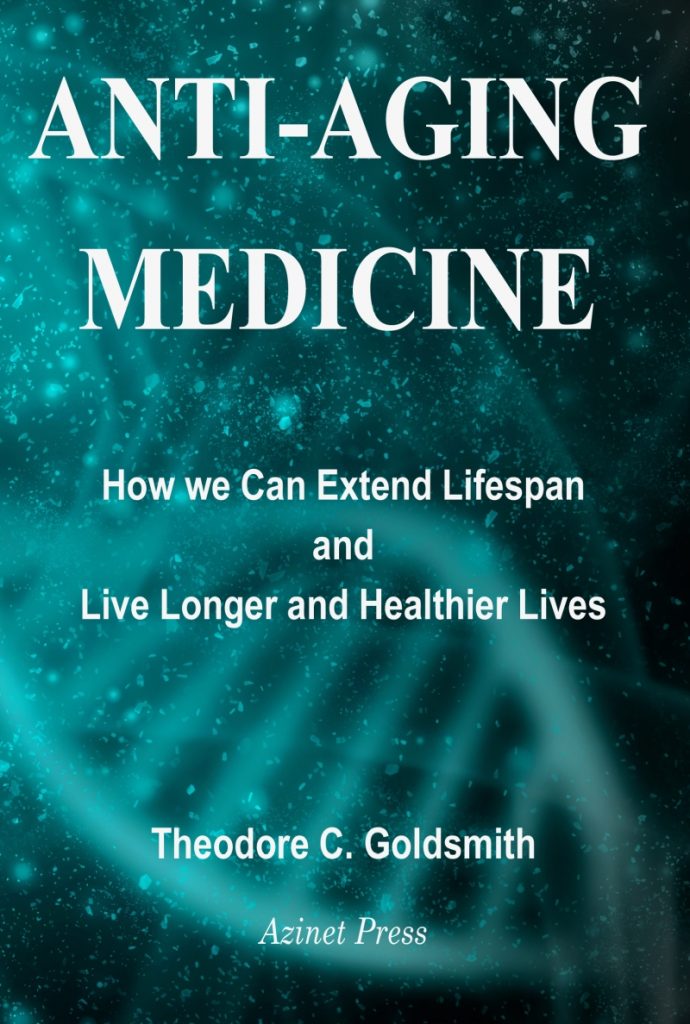

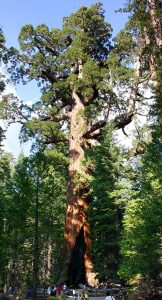
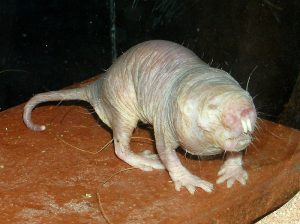
 WHY is it that despite more than 150 years of effort there is still no scientific agreement on even the nature of human aging? Is aging the result of fundamental limitations that could not be overcome by the evolution process, or a consequence of the lack of an evolutionary need for our ancestors to live longer, or the result of our possessing an aging program or biological suicide mechanism because populations of our ancestors received an evolutionary benefit from limiting individual lifespan? Many non-science factors act to bias thinking about aging and aging theories, mainly toward fundamental limitation theories or more recent non-programmed aging theories even though empirical evidence favors programmed aging theories. This is one of the reasons that no wide scientific agreement on even the nature of aging (much less details) exists today or is likely in the near future.
WHY is it that despite more than 150 years of effort there is still no scientific agreement on even the nature of human aging? Is aging the result of fundamental limitations that could not be overcome by the evolution process, or a consequence of the lack of an evolutionary need for our ancestors to live longer, or the result of our possessing an aging program or biological suicide mechanism because populations of our ancestors received an evolutionary benefit from limiting individual lifespan? Many non-science factors act to bias thinking about aging and aging theories, mainly toward fundamental limitation theories or more recent non-programmed aging theories even though empirical evidence favors programmed aging theories. This is one of the reasons that no wide scientific agreement on even the nature of aging (much less details) exists today or is likely in the near future.